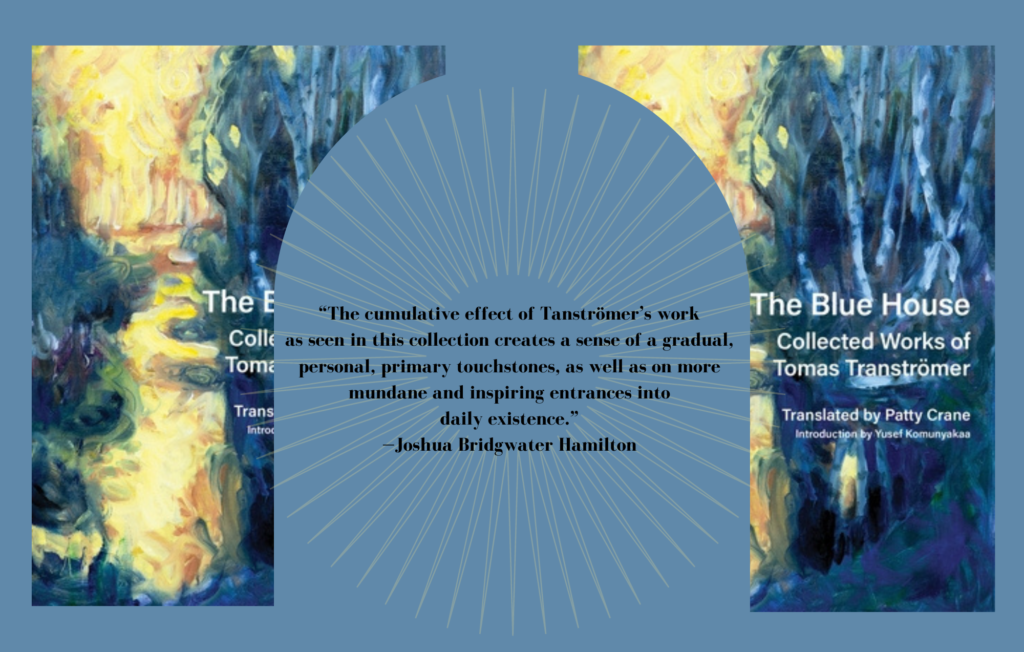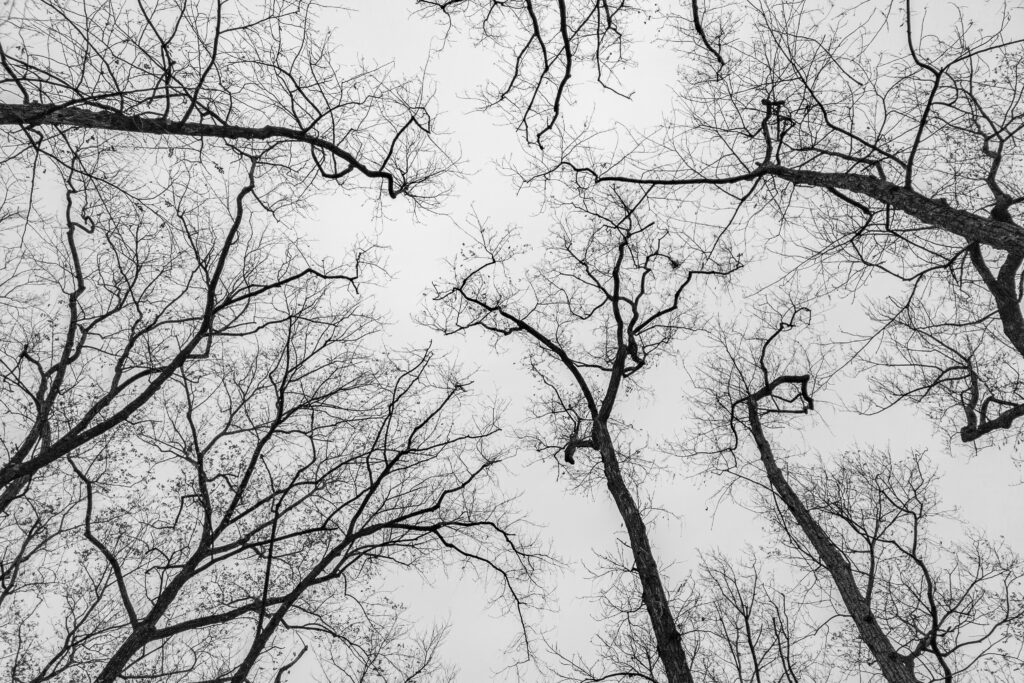Lyrical Encyclopedias: A Review of Patty Crane’s The Blue House: Collected Works of Tomas Tranströmer

Patty Crane’s selection and translation of Tomas Tranströmer’s poetry, entitled The Blue House: Collected Works of Tomas Tranströmer (2023) published by Copper Canyon, offers a generous sampling of work from all of Tranströmer’s original 13 books of poems, as well as selected material from his memoir, Memories Watch Me. This particular collection gives a more in-depth range of work than previous translated selections, such as Crane’s own Bright Scythe (2015), Robert Bly’s translations in The Half-Finished Heaven (2001), or Robin Fulton’s translations in The Great Enigma (2006).
In this collection, the reader can follow Tranströmer’s trajectory from the formal use of stanza, contemplation of nature, mundane context, and surprising juxtapositions in 17 Poems, to a deeper exploration of place, form, and haiku dynamics in later work. From his first book, this collection shows the variety of elements Tranströmer brought into his writing. Poems such as “Autumnal Archipelago” showcase the incisive and short-form contemplations that extract surprising images.
Here, “The moon’s mast has rotted and the sail’s rumpled. / A gull floats drunkenly over the water. / the jetty’s bulky mass is charred. The thicket succumbs to darkness.” This layering of distinct scene details takes on a more narrative consistency in the longer poems “Song” and “Elegy,” where the speaker re-spins a mythic tale of Väinö in the former and explores death and time through the bog-preserved body of the Bockston Man in the latter.
As one progresses through the books and years, more imagery of town spaces, third person characters, and culturally known figures enter the page. In “Balakirev’s Dream,” we find the Russian composer Mily Balkirev dreaming in a concert hall about the battleship Sevastopol, where he implores the sailors:
“Make the sign of the cross like me, cross yourself!”
The sailor stared somberly like a blind man,
stretched his arms out, sank his head down —
he hung as if nailed to the air.”
The section entitled “Prison” features the haiku form and turns a lens on the fringe realm of the incarcerated, while “The Half-Finished Heaven” brings the reader further into the personification of nature and natural elements that act as agents on humans. In the poem “Ringing,” for instance, “the thrush blew on the bones of the dead with its song,” and in “A Winter Night”: “The storm puts its mouth to the house and blows to get a tone.” From the section “Ringing and Tracks,” the reader observes Tranströmer’s extension of haiku logic into longer form.
In the poem “Crest,” for example, the speaker moves through abrupt changes in image and person, connecting seemingly unrelated things:
“With a sigh, the elevator begins to climb / in a high-rise as delicate as porcelain. / It’s going to be a hot day out on the asphalt. / The road signs all have droopy eyes.”
Moving through the collection, the reader sees a greater exploration of different forms—added to haiku, the prose-stanza and prose poem make a greater appearance in “Seeing in the Dark” and later work. Themes of loss, absence, and time passing become more prevalent, and the poetic exploration of travel, civic space, and geography feature more frequently.
In the section “Baltics” all of these themes come together in a beautiful, multidimensional exploration of the Baltic landscape around Tranströmer’s home country, where his grandfather was a ship pilot who guided the ships “out to the Baltic, through the wonderful labyrinth of islands and water.” But here in this same landscape appear also memories of a 12th century church, people in a landscape from an 1865 photo, a composer prosecuted by his own student, the speaker’s grandmother, and a “squat 200-year-old log fishing hut with heavy, gray, rough-hewn timbers.”
The cumulative effect of Tranströmer’s work as seen in this collection creates the sense of a gradual, personal, but very relatable lyric encyclopedia that allows the reader to reflect on their own life and archive of pivotal, primary touchstones, as well as on more mundane and inspiring entrances into daily existence. As Tranströmer explains in “Brief Pause in the Organ Recital”:
“But every person has their own encyclopedia written, which grows out from each soul,
composed from birth onward, hundreds of thousands of pages pressing into one another
and yet there’s air between them! Like trembling leaves in a forest. A book of contradictions.
What’s inside it is revised by the moment, the images touch themselves up, the words flicker.
A wave washes through the entire text, followed by the next wave, and the next…”


